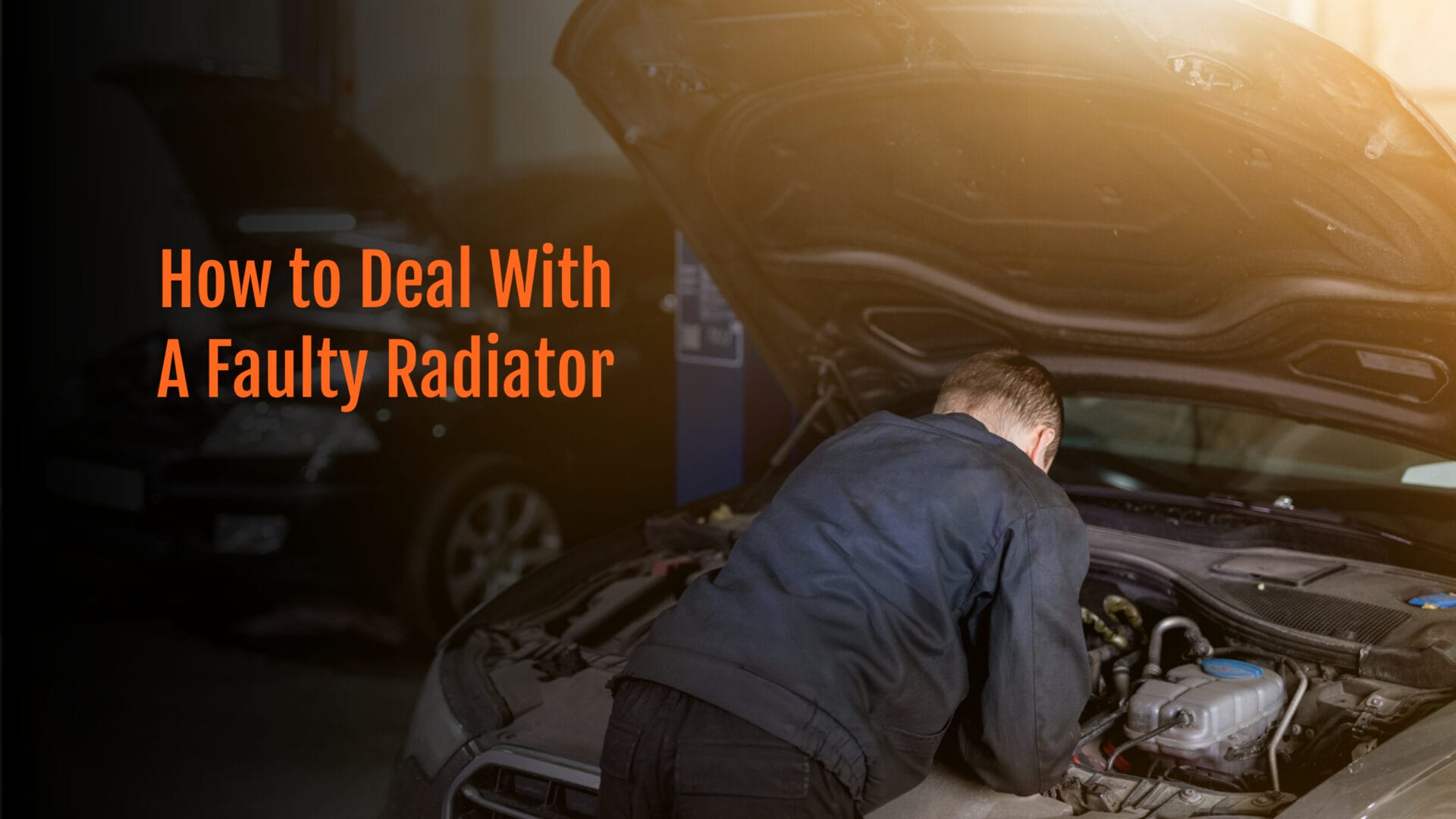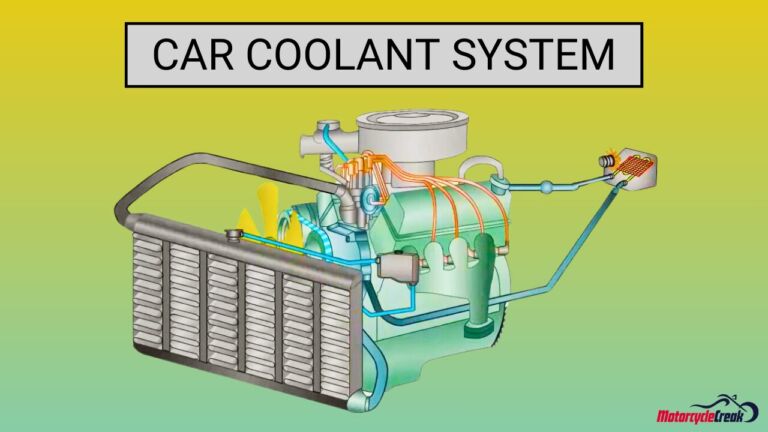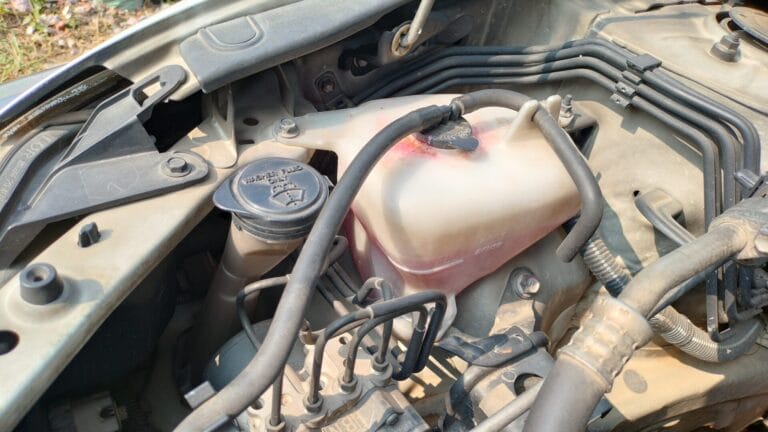Can A Car Run Without A Radiator? (Yes But.!)
It’s common for a car’s radiator to go bad within 5-10 years of usage. Blockage, corrosion, physical damage, etc., can cause your car’s radiator to go bad even faster. We know it can be expensive and time-consuming to replace the radiator, but, can a car run without a radiator?
Yes, your car’s engine will run without a radiator, but not for long. The radiator is a part of your car’s cooling system and it keeps your car cool by removing heat. So, without the radiator, your car’s engine will seize due to thermal expansion and friction from the overheating.
Keep reading to learn more about what the radiator does and why you shouldn’t run your car without it.
What Does The Radiator of A Car Do?
Your car’s radiator is one of the most important components of its cooling system. To keep your engine functioning at optimum efficiency, the cooling system needs to be in top-notch condition. Here’s what the radiator contributes to the system.

Circulating Coolant
The coolant is a mixture of water and antifreeze that absorbs heat from the engine components. When the coolant absorbs heat from the engine, it flows towards the radiator to cool down. The coolant again circulates back to the engine after cooling.
Since the radiator is part of a loop through which the coolant passes, it’s an essential component of circulating coolant. That’s how the engine has a continuous supply of coolant for heat absorption.
Removing Heat From Coolant
As mentioned, the heated coolant is flown to the radiator to cool down.
There’s a network of tubes inside the radiator and this channel allows the coolant to spread over a large surface area. Additionally, radiator fans blow cool air to reduce the temperature of the coolant. Modern cars can draw air into the system naturally as the car moves.
So, it’s more likely your car won’t have radiator fins but an air filtration system to absorb heat from coolant.
Maintaining Ideal Temperature
The heat your engine generates during combustion is too much to keep it functioning efficiently. Since the radiator removes this excessive heat, the engine can function without any performance loss.
Moreover, your engine can’t be too cool either, as that too will decrease fuel efficiency and even cause excessive emissions. The radiator, along with the thermostat and radiator fan, ensures that your car doesn’t get too cold either. So, the radiator maintains an optimum temperature for the engine.
Can A Car Run Without A Radiator? 5 Reasons To Not Try
A lot can go wrong when you attempt to run your car without a radiator. We’d advise against it strongly due to the following reasons:
- Overheating
Since the radiator dissipates heat absorbed by the coolant, without this, the coolant will stay hot while circulating back to the engine. This causes your car to overheat – the most common result of driving without a radiator.
- Engine Failure
When your car’s engine gets too hot, it’ll expand and lead to more friction. The heat can also warp important components like the piston rings, cylinder, etc.
In extreme cases, your engine block can crack as well and lead to an engine failure. Even if your engine doesn’t fail, the structural damage caused to it will have a lasting effect.
- Head Gasket Can Blow
The head gasket is the seal between your engine’s cylinder head and engine block. This is what separates the fluids cooling system and combustion system.
When your car is overheated, excessive stress is put on the head gasket, which may cause it to blow. This will result in oil and coolant mixup, which itself causes a lot of additional issues.
- Loss of Lubrication
Overheating can break down the engine oil and change its lubricating properties. It can also cause sludge to form, which will end up clogging various pathways. This will make it hard for oil to reach and lubricate different parts.
- Reduction in Performance
When so many things can go wrong without a radiator, it’s obvious that your car’s performance and efficiency will also be impacted.
Signs That Your Radiator is Malfunctioning

So, you now know it’s a bad idea to drive without a radiator. But what if your radiator goes bad without your knowledge? Look for the following signs if your radiator is getting old. It may be time to replace it!
- If your car is one of the newer models, your Check Engine light can be triggered and turned on when the engine is too hot.
- Another common sign is coolant leaks. If you notice bluish-green fluid where your car was parked for a while, it can mean you have a bad radiator.
- Discolored coolant means that there has been an oil and coolant mixup, which can be because of a radiator leak.
- If you notice a sweet fragrance around your car, that’s a sign of coolant leaks, too.
- Low coolant levels also point to a bad radiator.
- Unusual sounds coming from the engine can also be due to your radiator breaking down.
- Sludge buildup, corrosion, wear, and other physical signs indicate a radiator’s health.
How to Deal With A Faulty Radiator

If you’ve spotted some of the above signs, it’s likely there’s something wrong with your radiator. In this situation, you need to keep calm and go through the following steps.
- Stop Driving
Firstly, stop driving, as that’ll likely only make the problem bigger. The only distance you should drive to is your local car repair shop and that too very carefully. But you don’t have to get professional help just yet. There are other things you can try first.
- Flush The Cooling System
Sometimes, all you need to do is flush your cooling system to get rid of built-up sludge and other contaminants. To flush the system, ensure that your car is cool before starting. Drain the coolant from opening the petcock from the bottom of the radiator. After closing the petcock again, fill the radiator with water and run the engine long enough for water to circulate. Don’t let the engine get hot.
Repeat the flushing process again with another batch of water before draining the water and refilling it with fresh coolant.
- Check the Radiator Cap
Inspect the radiator cap for signs of wear and damage. A bad radiator cap can create a pressure imbalance.
It’s very easy to replace the cap. When the engine is cool, rotate the cap counterclockwise till it unscrews completely. Tighten the new cap onto the radiator by moving it clockwise.
- Inspect The Thermostat
If the radiator thermostat is stuck, it can be what is wrong with your car. All you need to do is replace the thermostat instead of replacing the entire radiator. Drain the coolant when the engine is cool. Remove the thermostat housing cover before disassembling the thermostat.
When placing the new one, make sure that the thermostat’s spring side is facing the engine. Get a fresh gasket to replace the housing cover and refill it with new coolant.
Note: The video below does a very good job of explaining the process in detailed steps.
- Call A Professional
If you have tried the above things and your radiator is still malfunctioning, we think it’s best to throw in the towel. Visit a local Autoshop or call in a professional.
How to Prevent Car Radiators From Getting Damaged
Taking proper care and maintenance can make your radiator last longer. Here are a few tips.
- Don’t neglect coolant changes and radiator flushes. Do them periodically to keep your radiator running smoothly.
- You need to use the right type of coolant recommended by the manufacturer. Also, invest in a good brand with a high-quality formula.
- Make sure to clean your radiator fins of debris, dirt, and other pollutants.
- Note down consistently high engine temperature. Clean the radiator and perform a coolant flush to prevent further damage.
Final Words
To sum up, can a car run without a radiator? Technically, yes, but not for long. Running your car with a bad radiator can cause it to overheat fast, which can warp the engine. Ultimately, it causes engine failure in extreme cases.
So, it’s definitely not worth it to drive your car without a radiator. You can start by flushing the cooling system with water and refilling the coolant. If that doesn’t solve your radiator issue, you may need to think about replacing the radiator.
You can replace parts like the radiator cap and thermostat; if that solves the issue, it will save you some money. If not, get a professional to change the radiator for you.






